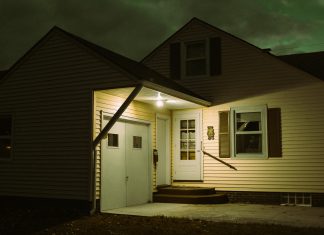Table of Contents
- Understanding Free Nights and Weekend Electricity Plans
- How Do Free Nights and Weekend Plans Work?
- Economic Implications of Time-Based Electricity Rates
- Pros and Cons of Free Nights and Weekends
- Examining the Environmental Impact
- Matching Your Lifestyle with the Right Electricity Plan
- Tips for Maximizing the Benefits of Time-of-Use Plans
- Finding the Right Provider for Your Needs
Understanding Free Nights and Weekend Electricity Plans
With modern billing methods like free nights and weekend plans, energy providers encourage off-peak energy consumption. These efforts manage grid load and incentivize consumers to adjust their energy consumption habits. With these plans that offer savings, it’s not just about using energy but about when you use it, and understanding the nuances of these plans is the first step towards optimizing your power usage for cost and efficiency.
How Do Free Nights and Weekend Plans Work?
Diving deeper into the mechanics, these plans typically divide the day into peak and off-peak hours, with peak hours coinciding with the highest energy demand on the grid, usually weekdays and daylight hours. As the name suggests, electricity used during nights and weekends—typically marked as off-peak—is not charged, potentially allowing users who can consume more power during these times to enjoy lower electricity bills. The concept rewards those who can adapt their energy habits, such as running heavy appliances at night or charging electric vehicles over the weekend, allowing for significant savings without compromising their energy needs.
Economic Implications of Time-Based Electricity Rates
These time-based rates are not just a billing gimmick; they have considerable economic repercussions. They can potentially save consumers money, but they can also contribute to a more stable and efficient power grid. By incentivizing energy consumption when the grid is underutilized, these plans help even out the demand throughout the day and night. This evens out the demand curve, ultimately leading to potentially reduced operational costs for power suppliers and, thereby, more favorable long-term consumer rates.
Pros and Cons of Free Nights and Weekends
Although the allure of lower bills is enticing, it is crucial to consider both the pros and cons of these plans. These plans can equate to sizeable savings for the night owls and weekend homebodies. However, the benefits can be negligible- or even costlier- for those whose lifestyles don’t match the off-peak periods or who live in apartments where heavy appliance use is restricted to certain times. Daytime energy rates under these plans are typically higher than traditional flat-rate plans, which can offset the savings gained during the free periods if significant daytime consumption is unavoidable.
Examining the Environmental Impact
While financial savings are often the highlight, the environmental implications of free nights and weekend plans deserve recognition. Shifting energy consumption to off-peak times can lead to a smaller carbon footprint, as non-renewable power plants—often employed during high demand—are less likely to be needed. To grasp the complete environmental picture, it is essential to consider the broader impact of peak demand on the energy mix. These times often coincide with greater reliance on fossil fuels, which can be mitigated through off-peak consumption enabled by these billing plans.
Matching Your Lifestyle with the Right Electricity Plan
Electing the most appropriate electricity plan is a personal choice that hinges on more than just economics—it’s an exercise in self-awareness and lifestyle understanding. An individual’s daily routine, home life, and leisure habits all play roles in determining whether a plan offering free electricity at night and over weekends will be beneficial. It is just as crucial to be realistic about your household’s ability to adjust to such a plan as it is to recognize the potential financial upside.
Tips for Maximizing the Benefits of Time-of-Use Plans
Seizing the full advantage of a time-of-use plan does require strategy. Here are several actionable tips to help you navigate the savings potential:
- Understand your plan’s specific off-peak hours: Not all plans define ‘night’ and ‘weekend’ the same way, and knowing exactly when your usage won’t be charged is critical.
- Invest in intelligent appliances and timers: Many modern appliances have features that allow you to program their operation. For those that don’t, a simple timer can suffice to ensure your usage falls within the free periods.
- Consider lifestyle changes: Shift energy-intensive chores and activities into the plan’s no-cost windows. This may involve doing laundry late at night or batch-cooking for the week over the weekend.
Clever use of technology and a slight shift in household habits can lead to tangible economic benefits under these plans. Lastly, selecting the right provider is paramount in the journey toward energy savings. Beyond comparing the rates, delve into customer service reviews, billing transparency, and the provider’s energy source mix. Additionally, it’s beneficial to consider providers responsive to customer needs and invested in a sustainable energy future. An exhaustive comparison of different energy providers and plans is the best method to ensure that the service you subscribe to aligns well with your consumption patterns and personal values.















